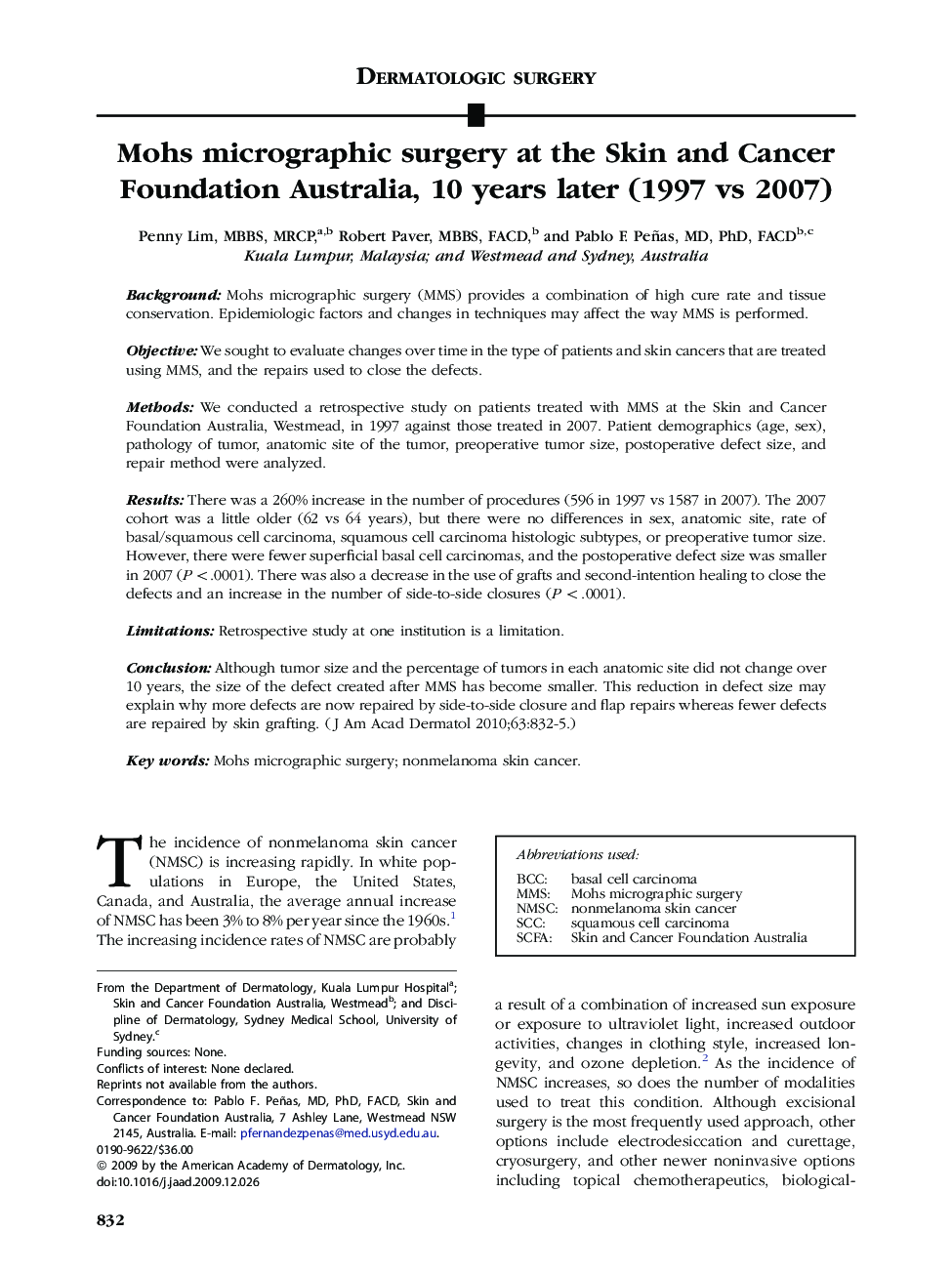| Article ID | Journal | Published Year | Pages | File Type |
|---|---|---|---|---|
| 3208852 | Journal of the American Academy of Dermatology | 2010 | 4 Pages |
BackgroundMohs micrographic surgery (MMS) provides a combination of high cure rate and tissue conservation. Epidemiologic factors and changes in techniques may affect the way MMS is performed.ObjectiveWe sought to evaluate changes over time in the type of patients and skin cancers that are treated using MMS, and the repairs used to close the defects.MethodsWe conducted a retrospective study on patients treated with MMS at the Skin and Cancer Foundation Australia, Westmead, in 1997 against those treated in 2007. Patient demographics (age, sex), pathology of tumor, anatomic site of the tumor, preoperative tumor size, postoperative defect size, and repair method were analyzed.ResultsThere was a 260% increase in the number of procedures (596 in 1997 vs 1587 in 2007). The 2007 cohort was a little older (62 vs 64 years), but there were no differences in sex, anatomic site, rate of basal/squamous cell carcinoma, squamous cell carcinoma histologic subtypes, or preoperative tumor size. However, there were fewer superficial basal cell carcinomas, and the postoperative defect size was smaller in 2007 (P < .0001). There was also a decrease in the use of grafts and second-intention healing to close the defects and an increase in the number of side-to-side closures (P < .0001).LimitationsRetrospective study at one institution is a limitation.ConclusionAlthough tumor size and the percentage of tumors in each anatomic site did not change over 10 years, the size of the defect created after MMS has become smaller. This reduction in defect size may explain why more defects are now repaired by side-to-side closure and flap repairs whereas fewer defects are repaired by skin grafting.
